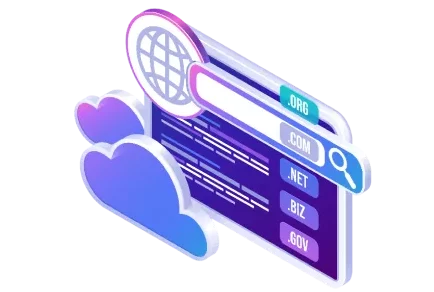What is link building and how to properly form a link profile
Link building
10 минут
01.04.2025

When a business seeks to attract customers, increase recognition and gain trust, it launches a website. Ideally, the website becomes a tool for increasing revenue. But there are millions of web pages on the Internet, and the search engines Google and Yandex must decide which of them to show first in response to a request.
People rarely go beyond the first page of search results, and most clicks are on the top 5 results. If the site is not in these positions, customers simply will not know about you. Even large advertising budgets will not produce an effect if search engines do not consider the site relevant and trustworthy.
In order for a site to be considered authoritative, you need to develop its link profile – get back URLs. This is link building. The more quality resources link to your site, the more new clients you will get.
Link building basics: what is it
Link building is the process of getting external links to your site to increase its authority in the eyes of search engines.
If you dig deeper, link building is the process of building relationships with the owners of relevant sites that will link to your content because it makes their site better. When you are focused on the result – getting links – and do not want to write letters asking to be placed on someone else’s resource, this task should be delegated to professionals.
Link building is important because of PageRank – Google’s algorithm that evaluates sites by the number and quality of external links. Without assigning ranks, search engines cannot sort the results. Therefore, they calculate the authority of sites using internal algorithms and rank them from the most relevant to the least useful. Backlinks are links to your site from other resources. These are the links you want to get during link building. Backlinks are absolutely necessary if you want to rank for competitive queries and phrases.
Backlinks suitable for promotion can be obtained by agreeing on placement in directories, media articles, expert blogs, social networks, thematic forums and other authoritative sites. All external links together form the link profile of the site.
Natural link building: why is it necessary
The correct strategy for obtaining mentions on external sites is natural link building. This means that links should look organic, as if they appeared on their own. Google prohibits buying links. For unnatural promotion, you risk falling under the filter – the search engine will send your resource to the shadow ban.
Natural link building is done by expert link builders. For example, Bootyboost specialists help carefully improve the site’s position in search results through the gradual and balanced placement of links to your site on authoritative domains.
To achieve this, they:
- use different types of links;
- place links on relevant sites;
- monitor the reputation of donors;
- choose several types of donors: blogs, forums, media, social networks.
How link building affects website promotion
From a technical point of view. Each external link to a website is a vote in its favor. The more votes from respected resources, the higher the website will be in the search results.
From a social point of view. Links are considered a sign of trust. If authoritative sites link to you, it means that your content and products are useful.
From a business point of view. A large number of high-quality external URLs will improve search results, which means increasing organic traffic, reducing acquisition costs, increasing brand awareness and bringing more money to the company.
The target indicator that should grow with a successful SEO strategy and effective link building is traffic. This is the number of unique users who visited your website. The higher the traffic, the greater the chance that your products or services will be purchased, and you will become more famous in the industry.
Link quality: how to distinguish good and bad links
Search engines used to automatically use the principle “the more, the better.” But algorithms have become smarter and now evaluate both the quantity and quality of links. Bad spam links lead to lower positions in search results.
Reliable links
The reliability of a link on a donor resource is affected by its relevance and authority.
Relevance means that the topic of the donor resource corresponds to the topic of your site. The closer their content, the higher the value for search engines. Algorithms take this into account when ranking, because they perceive such links as natural recommendations in the professional community.
Criteria:
- The donor and target site are related by topic or industry.
- The content on the donor site is high-quality and useful.
Example: If you want to sell a garage, you can list it on real estate sales resources. Posting ads on the entrances will be less effective, and buying an advertising banner with the caption “Buy a garage urgently!” on a recipe site is a waste of money. The same goes for links: they should be placed on relevant resources.
Authority means the level of trust and recognition of the donor site by search engines and users. For example, Forbes and TASS are authoritative sources, while the site “Samiye-milye-novosti-tochka-ru” with three posts is not so much. The older the domain, the higher its authority.
Criteria:
- The donor has a high site quality index — Domain Rating (DR) and pages — URL Rating (UR). You can check it using the Ahrefs service with a scale from 0 to 100. Or find out the Domain Authority (DA) indicator in the Moz service with the same scale.
- The donor has a good link profile and a high level of trust.
- The donor site is consistently visited by many active users.
- For Yandex: the donor has a high thematic citation index (TIC).
Example. If you are serious about selling your garage, you should place an ad on Avito, Cian, Domclick or another popular site. It’s good if it’s well-known. You shouldn’t go to the so-called “Bereza village bulletin board” that your friend created yesterday. Your buyers aren’t there. The same goes for links: place them on reputable resources with more than 100 unique visitors per day.
✅ Purchased links are considered high-quality. Most are placed for money, and that’s okay: the owners of relevant and reputable sites want to profit. It’s difficult to negotiate with them, but it’s possible, especially through intermediaries.
Spam links
Imagine that a website is a restaurant. In order for people to come in, influential people, travelers and critics should talk about it. This makes the establishment more popular. But if only a shady guy on the corner recommends coming in, most likely people won’t come.
Placing links on irrelevant and little-known resources will not attract visitors, but will scare them away.
Low-quality links are not only useless, but can also harm search engine promotion. These include backlinks from sites that post any links indiscriminately and have almost no real traffic. Harmful links also include mentions on link farms, sites with low ratings and TIC, resources not on your topic and, in some cases, mass-purchased links.
What types of links are there: types and features
In addition to dividing into good and bad, there is another classification of links.
Anchor links
Links that use a text anchor, such as “buy a garage” or “69% of users.” That is, the necessary keywords are underlined or highlighted in blue in the text on the site and become clickable.
Anchor links are useful for both SEO and users. Algorithms understand what content is on the page at the link, and people form an idea of what they will see after clicking.
But if overused, anchor links look unnatural, and the site risks being filtered. Google does not approve of an excessive number of links on key phrases. It believes that you should not do this:
Anchorless links
Anchorless links – links without a keyword – are displayed in the following format:
- a regular or short URL – https://bootyboost.link/ru/;
- general words – “here”, “here”, “by link”, “in the article”, and so on.
Anchorless links should be alternated with anchor ones. Just imagine that you are talking to a real person. If you keep repeating “buy a garage,” it will start to irritate. It is better to replace it a couple of times with something more natural, for example, “you can see the inside of my garage here.”
Image links
These are hyperlinks attached to images. To go to another page, users click on images instead of text, such as advertising banners, logos, graphs, or diagrams.
Image links improve the usability of a website, but they can also work for promotion if they have the right alt attributes. In the alt attribute, you need to use keywords related to the content of the image and the topic of the site.
Link Building Methods and Strategies: What Works in 2025
Search algorithms are getting smarter, and Google and Yandex are constantly updating their SEO policies. So what worked five years ago may no longer work. Let’s look at the three best strategies we use at the agency.
Outreach
Outreach is getting links through contacts with website owners, journalists, and bloggers to place backlinks in articles or reviews. Site administrators are not always ready to contact marketers, so working through an agency is a great way to reach colleagues from the industry.
Crowd
Crowd is getting SEO links in comments, messages on social networks, forums, and review platforms. Backlinks on these resources continue to work after all search algorithm updates. In addition, if there are none, Google and Yandex may suspect something is wrong and ban your site as a preventative measure. The main thing is not to spam, but to give useful recommendations with an organically embedded link.
Private Blog Network
PBN is a network of sites created by one owner specifically for link building. Users see them as resources with articles about everything under the sun. Previously, such schemes worked great, but recently search engines have been punishing for obvious PBNs. It is worth approaching the matter wisely. To do this, we use sites with a real history, develop pages with content and dilute the link building strategy with links from natural sources.
Bonus method: drops
Drops are sites for selling links. They contain articles on various topics and do not always have high-quality content. Search engines consider drops to be spam.
How to build a link profile: a step-by-step process
You can build a link profile in Russia in 2025 for both white companies and companies from gray niches – dating, gambling and betting. There are no special restrictions on the types of business, and the process will be similar for everyone.
Step 1. Site analysis
Analyze your site and find out the domain authority to select donors of approximately your level. Use Ahrefs or Yandex Webmaster tools for analysis. Do the same when studying the donor site.
Study the topic of the site, its audience and the region suitable for promotion. It should be relevant to your business. Check the quality of the links that the selected resource has previously posted.
Step 2. Studying competitors
First of all, analyze your competitors, their backlinks and resources. Then download and study the link profiles of their donors.
Analyzing competitors’ donors helps you get two important insights:
- Are there donors that are better in terms of metrics, quality, and popularity than those you found at the first stage.
- What link building methods work in your niche: how often do they publish links, are they willing to post other people’s materials, how much do they charge for posting.
Try to replicate the best strategies of your market competitors.
Stage 3. Selecting the best donors
Collect a database of the best of the best. Evaluate the appearance of the sites, the speed of work, the quality of the content, the activity of visitors and the amount of advertising.
Advice: choose thematic sites with high trust, organic traffic and DR. If you have little experience in link building, do not use drops and PBN without consulting with experts.
Stage 4. Selecting sites with high value
Not all donors are useful. Many will have to be filtered out at the early stages. But it is better to get 10 high-quality links than 100 backlinks from questionable resources and fall under sanctions from search engines.
Advice: poor indexing (20-30%) is a red flag. Check not only the site quality index (SQI), but also the indexing to make the right choice.
Stage 5. Placement and monitoring of results
Agree on paid or free placement of links. Incorporate links into the content organically. After that, use Google Search Console and Ahrefs to analyze the growth of traffic and positions.
Tools for effective link building
To create a link profile in RuNet, you may find the following useful:
- Ahrefs for analyzing your site and competitors and searching for donors;
- Semrush for analyzing web pages and optimizing content;
- Yandex Metrica for tracking behavioral factors and conversions;
- SimilarWeb for filtering donors by the required parameters;
- Bootyboost for buying high-quality links on authoritative resources;
- Miralinks for posting unique articles with links.
Working practices for building up link mass
Finally, we will give a couple of useful tips. Honestly: we ourselves would have liked to hear them when we were just starting to work with links.
- Diversify your link sources. If you use outreach, crowd, PBN and guest articles, search engines will accept the growth of the link mass as natural, and your traffic will grow without limits.
- Use natural anchors and avoid overspamming. Don’t put 10-100-1000 links for each keyword in the text. Read what Google requires and follow its rules.
- Monitor the profiles of competitors in your industry and adopt their best strategies. Study their donors and contact the same resources.
- Check the quality of donors before posting. “An old friend” is better than two new ones. And a “quality friend” is better than a bad company.
Contact the professionals at Bootyboost for advice. We will tell you how to attract traffic to the site and improve its position in search results.
FAQ
What is link building?
Link building is a way to get external links (backlinks) to your site from other resources to improve its position in search engines, increase visibility and efficiency.
Why do you need link building?
The more quality links your site has from authoritative and relevant resources, the higher the search engine rating, user trust, and sales of goods and services.
Link building and SEO: why you can’t do without links?
Links are important for ranking. They help search engines understand how authoritative the site is and whether it deserves high rankings. The company’s popularity and, consequently, the number of clients depend on this.
Last step to get started
Tell us a little about your project, needs, and goals, and we will respond with how we can help

Link building
01.07.2025
5 Linkbuilding mistakes to avoid
Linkbuilding is a complex part of SEO promotion that requires specialised knowledge. Often, those who do not take into account all the features of the link mass accumulation process make mistakes that lead to the exclusi...

Link building
01.07.2025
How Linkbuilding affects a site’s position in search engines
One of the key ranking factors is the presence of high-quality external links. Effective website promotion is impossible without long-term external support in the form of a link mass. The links must be taken from reliabl...

Link building
01.04.2025
What is link building and how to properly form a link profile
When a business seeks to attract customers, increase recognition and gain trust, it launches a website. Ideally, the website becomes a tool for increasing revenue. But there are millions of web pages on the Internet, and...
Оставить комментарий